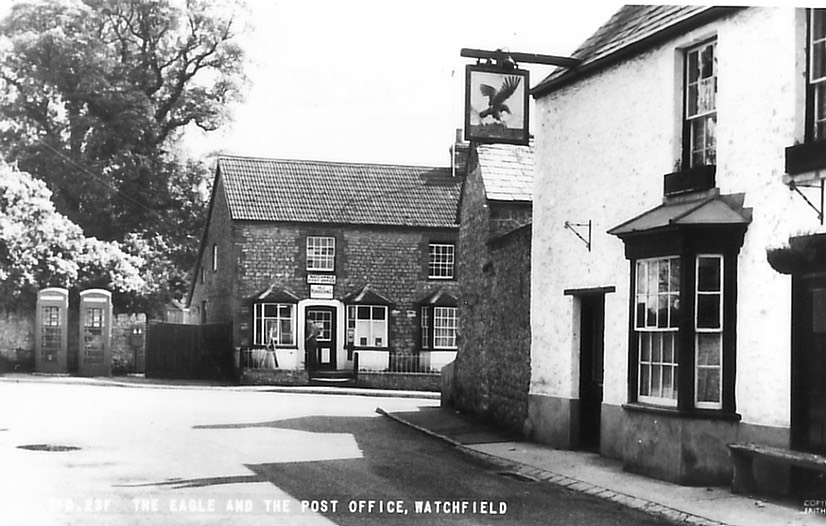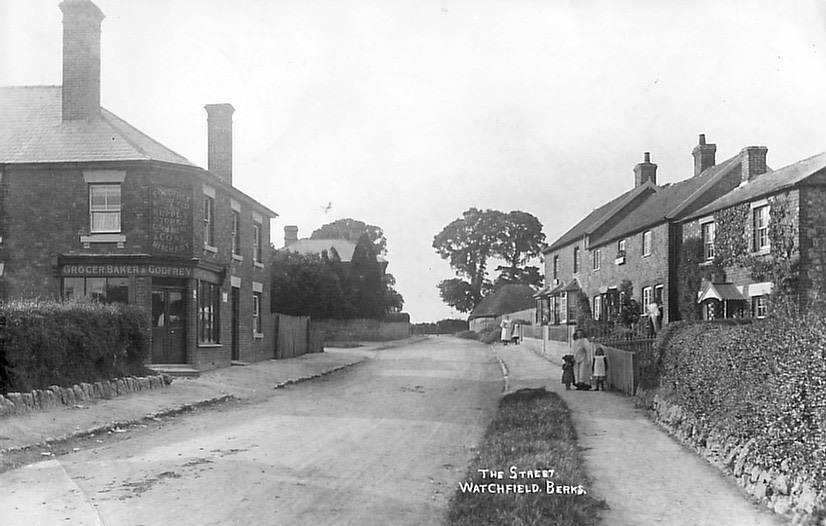By the very nature of its location, the community of Watchfield has always been heavily involved in agriculture. Many of the documents that survive reflect that fact and are an invaluable source for telling us who was living there. In the early years of the 18th century the church was still very active in extracting money from the parishioners. The system of tythes, usually payable to the church is a complex one and something that I have no intention of trying to explain. It would seem that even those contemporary people had difficulty in understanding it as the next document will attest. Suffice it to say a Yardland referred to an amount of land used as a farm within the open fields and could be from 10 to 60 acres depending upon local soil conditions.
BRO D/Epb-E54
‘Affidavit of Gearing & others concerning ye Vicarial Tythes of Watchfield 30 Jan, 1761.' In Chancery
John Gearing of Watchfield in the Parish of Shrivenham in the County of Berks, Husbandman aged 69 years and Robert Alder of the same place, Yeoman aged 67 years, and Edward Young of Shrivenham in the said County, Yeoman, aged about 73 years, severally make Oath and say and first this deponent John Gearing for himself saith that he hath been resident in Watchfield aforesaid from his infancy to this time and all these deponents say that the said village or Tything of Watchfield formerly paid 14 pence for every Yard lands in the said Tything yearly for the Small or Vicarial Tythes in the said Tything of Watchfield the tenth of the tenth of the Tythes of all corn or pock of wheat and a pock of Barley for every the said Yard Lands except West Mill Farm and which said pock of Wheat and Barley is called Chapple Corn and payable at the feast of St Thomas the Apostle yearly and all those deponents say that such payments were taken by the Vicar of Shrivenham yearly in lieu of all and every the Vicarial or Small Tythes for each Yard Lands and these deponents say that no other Vicarial Tythe have been paid or demanded for a Yard Lands at Watchfield and these deponents further say that for about 20 years past 16 pence hath been paid yearly to the said Vicar of Shrivenham with the said Wheat and Barley and tenth of the tenth of the Tythes of Corn in lieu of all Small Tythes in the said Tything of Watchfield for such Yard Lands and this deponent Robert Alder for himself saith that for about 20 years past for this deponent hath paid and still continues to pay to the said Vicar of Shrivenham 8 pence by the year with the other payments in Corn before mentioned in lieu all Vicarial or Small Tythes for his Half Yard Lands in Watchfield aforesaid and saith that no other Vicarial or Small Tythes have ever been demanded or paid by this deponent for his said Half Yard Lands.
Sworn at Coleshill in the County of Berks this 30th day of January 1761 before me
Chas Harding, John Gearing and the marks of Robert Alder & Edward Young
Jas Angel Young. 2 May, 1766’
Watchfield Tythes approx 1710.
John Townsend For the Farm £30.00.00
For Mary Gearings lands £ 1.6.6
Mr John Blagrave For his own £13.6.5
Alders land £ 8.10.11
Mr Thomas Fairthorne For his own £12.14.10
Mr Tho Jenner For his own £ 9.5.4
For Syzage Tythe £ 2.3.5½
Stephen Avenill For his own £ 8.17.8
Mrs Elizabeth Stratton For her own £ 5.14.4
Anthony Anger For his own £ 2.12.1½
John Young For his own £ 1.13.9½
Judith Haynes widow For her own
Thomas Watts For his own £ 1.14.9
For Robert Gearing £ 1.14.9
For Mrs Bond, Will Alder £ 3.19.2
For Tho Gearing £ 2.11.9
For S…Young, Anth Anger
Ang bought of Thomas Gearing illegible
John Young For Robert Alders land £ 0.17.9
Mrs Thom Stratton For Mrs Joyners land £ 2.15.0
For Alders land £ 2.13.4
Philip Young For Isaac Young £ 1.6.6
Mary Young widow For..(illegible) £ 1.19.7
Wm Young For his own £ 1.4.1 ¾
Mary Vokins For her own £ 0.5.0
Samuel Young For Rob Weeks £ 2.1.6¼
Joan Young widow For her own £ 0.9.7
BRO D/Epb-E54. A list of Tythes due from the various landowners and occupiers. Exactly how it was calculated is somewhat enigmatic
We can learn from the documents that do survive from the Blagrave papers, that they possessed a large amount of land in Watchfield. However, due to the nature of it being widely spread around the village it is impossible to give an exact figure. Much of the land was owned at Manorial level and either rented or leased. The largest part of the land that lies within the Watchfield Parish boundary is the vast open expanse to the North of the village. This was later to become an RAF Base and today the site of the controversial wind generators. The Willington Map of 1758, shows that this area was made up of over 100 smaller fields and enclosures. In the reference, Willington notes; ‘The Land belonging to the Little Farm, let to William Thomas lies so dispersed about, that I could not take any notice thereof in this plan.’ Some of the land was also owned by people from outside the village. Close by, just a short walk over the fields, is the village of Coleshill. The very large house that once stood there was, in more recent centuries, the seat of Lord Radnor, alias the Pleydell and Pleydell-Bouverie family. Sir Mark Stuart Pleydell was one of the more flamboyant figures of that period and possessed a land holding far and wide around the area. As well as owning large amounts in Shrivenham he also held land in Watchfield. In the County Archives at Reading there is an amazing little notebook called a Quarto Survey Book which dates from the 1730’s but copied and updated in 1753. It contains a series of drawings, one of which includes Watchfield, reproduced digitally in Picture 27.
Picture 27 (above). King's Barn would have stood approximately where the Post Office stands now. Parsonage Barn would have held not only the crop due for Church Tythes biut that also due to Sir Mark. Compare this with the Willington Map in the front of this book.

This is the area shown in the map that is Picture 28 above. Kings Barn would have stood where the Post Office stands in the picture above taken in 1955.

In Picture 29 above, turning left after Mr Godfrey’s shop in 1905, would have led you to the huge Parsonage Barn. Both Pictures above, Courtesy of Paul Williams